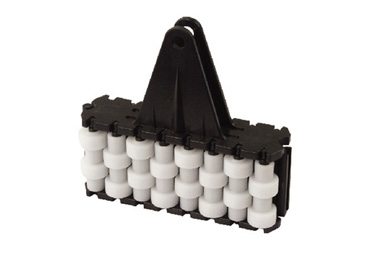11 Years Factory wholesale Har P706 Light Power Connector Type Conveyor Parts Wholesale to Florence
11 Years Factory wholesale Har P706 Light Power Connector Type Conveyor Parts Wholesale to Florence Detail:
Product detail pictures:
We rely upon strategic thinking, constant modernisation in all segments, technological advances and of course upon our employees that directly participate inside our success for 11 Years Factory wholesale Har P706 Light Power Connector Type Conveyor Parts Wholesale to Florence, The product will supply to all over the world, such as: Bandung, America, Belarus, We have a dedicated and aggressive sales team, and many branches, catering to our customers. We've been looking for long-term business partnerships, and ensure our suppliers that they will certainly benefit in both short and long run.
Follow us at: https://plus.google.com/+tutorvista/
Check us out at https://chemistry.tutorvista.com/inorganic-chemistry/metallurgy.html
Blast Furnace
Modern furnaces are equipped with an array of supporting facilities to increase efficiency, such as ore storage yards where barges are unloaded. The raw materials are transferred to the stockhouse complex by ore bridges, or rail hoppers and ore transfer cars. Rail-mounted scale cars or computer controlled weight hoppers weigh out the various raw materials to yield the desired hot metal and slag chemistry. The raw materials are brought to the top of the blast furnace via a skip car powered by winches or conveyor belts.There are different ways in which the raw materials are charged into the blast furnace. Some blast furnaces use a “double bell” system where two “bells” are used to control the entry of the raw material into the blast furnace. The purpose of the two bells is to minimize the loss of hot gases in the blast furnace. First the raw materials are emptied into the upper or small bell. The bell is then rotated a predetermined amount in order to distribute the charge more accurately. The small bell then opens to empty the charge into the large bell. The small bell then closes, to seal the blast furnace, while the large bell dispenses the charge into the blast furnace.A more recent design is to use a “bell-less” system. These systems use multiple hoppers to contain each raw material, which is then discharged into the blast furnace through valves These valves are more accurate at controlling how much of each constituent is added, as compared to the skip or conveyor system, thereby increasing the efficiency of the furnace. Some of these bell-less systems also implement a chute in order to precisely control where the charge is placed.
The iron making blast furnace itself is built in the form of a tall chimney-like structure lined with refractory brick. Coke, limestone flux, and iron ore (iron oxide) are charged into the top of the furnace in a precise filling order which helps control gas flow and the chemical reactions inside the furnace. Four “uptakes” allow the hot, dirty gas to exit the furnace dome, while “bleeder valves” protect the top of the furnace from sudden gas pressure surges. When plugged, bleeder valves need to be cleaned with a bleeder cleaner. The coarse particles in the gas settle in the “dust catcher” and are dumped into a railroad car or truck for disposal, while the gas itself flows through a venturi scrubber and a gas cooler to reduce the temperature of the cleaned gas.The “casthouse” at the bottom half of the furnace contains the bustle pipe, tuyeres and the equipment for casting the liquid iron and slag. Once a “taphole” is drilled through the refractory clay plug, liquid iron and slag flow down a trough through a “skimmer” opening, separating the iron and slag. Modern, larger blast furnaces may have as many as four tapholes and two casthouses. Once the pig iron and slag has been tapped, the taphole is again plugged with refractory clay.The tuyeres are used to implement a hot blast, which is used to increase the efficiency of the blast furnace. The hot blast is directed into the furnace through water-cooled copper nozzles called tuyeres near the base. The hot blast temperature can be from 900 °C to 1300 °C (1600 °F to 2300 °F) depending on the stove design and condition. The temperatures they deal with may be 2000 °C to 2300 °C (3600 °F to 4200 °F). Oil, tar, natural gas, powdered coal and oxygen can also be injected into the furnace at tuyere level to combine with the coke to release additional energy which is necessary to increase productivity.
Please like our facebook page
https://www.facebook.com/tutorvista
Mushtaq’s Food Machinery; The Leading British Manufacturers of Kebab Machines, Seekh Kebab Makers, Souvla Souvlaki Rotisserie Grills, Seekh Kebab Conveyor Grills, Sheesh Kebab Machines, Shish Kebab Machines, Shish Kebab Auto Grill, Kebab Skewer Machines, Fire Cooking Mixers, Ladoo Machines, Dough Divider/Rounders, Roti Machines, Samosa Machines, Chapatti Machine, Conveyor Fryers, Spice Grinders, Encrusting Machines, Centrifuge, Vegetable Choppers, Boondi Machine, Khoya Machine, Paratha Machines, Rassmalai Machine, Arrosticini Grills, Churrasco Grills, Joojeh Kabab Grills, Jujeh Machines, Kebab Machines, Flame Grills, Sheftalia Machines, Sheftalia Grills, Conveyor Grills, Kebab Auto Conveyor Grills, Souvlaki Grill, Souvla Grill, Souvlakia Machines, Kebab Auto Grill, Adana Grill, Kebob Grill, Sheesh Kebab Machines, Kalamaki Grill, Spring Roll Machines, Seekh Kebab Grills, Shish Kebab Grills, Lamb Kofteh Grills, Kofta Grills, Koobideh Grills, Kubida Grills, Kabob Grills, Naan Ovens, Chapatti / Roti Machines, Flame Grills, Lava Grills, Brazilian BBQ Grill, Subula Grills, Kenjeh Grills, Kakori Grills, Kalamaki Grills, Kabab Borg Grills, Chuan Grills, Grills to make all types of Skewered Kebabs; Ukranian Shish Kabob, Patychyk, Russian Shish Kebab, Sis Kebap, Lula Kabab, Shishche Kebab, Chuanr Kebab, Souvlakia, Soltani Kebab, Kubide Kebab, Jujeh Kebab, Kebabnorsk, Chenjeh Kebab, Kebab Hindi, Suya Kebab, Brochette, Espetada grill, Cevapi Kebab, Frigarui, Satay, Kakori, Kenjeh, Cevape…etc
Visit: www.mushtaqsfoodmachinery.com
This is a honest and trustworthy company, technology and equipment are very advanced and the prodduct is very adequate, there is no worry in the suppliment.

